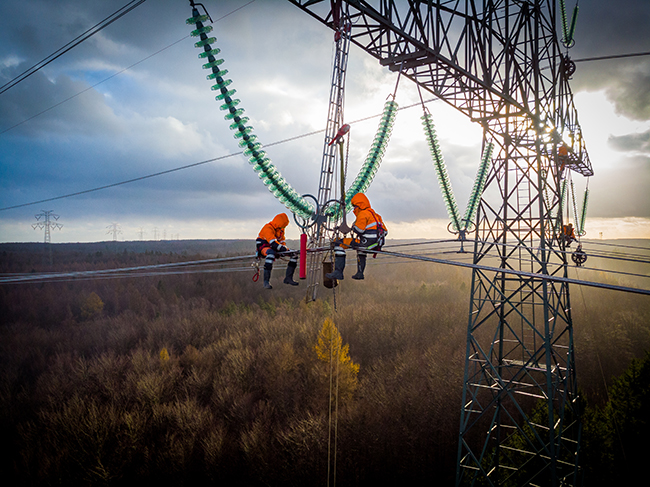Action needs to go beyond the usual technological solutions, countries must consider not just kilowatts and power lines, but also include the social dimensions of energy transition.
The new report by CAN Europe urges Transmission System Operators (TSOs), Distribution System Operators (DSOs), and national governments in the Central and Eastern European (CEE) region to collaborate and drive the transformation of electricity grid infrastructure for an accelerated renewable energy transition.
The report includes recommendations that go beyond technological advancements and renewable capacity growth, emphasiszing the need to address social dimensions. This inclusive approach involves tackling energy poverty, ensuring fair energy access, supporting energy communities, and providing targeted assistance to those in need.
By adopting a socially inclusive and just approach to energy transition, CEE countries can actively shape a future energy system that contributes to the prosperity of their citizens while fostering resilience, security, and affordability. This article summaries the main recommendations for nNational governments, rRegulators (NRAs), TSOs, and DSOs to engage with and embrace a new energy paradigm and actions which that would support the transition;
1. Foster political vision and strategic planning: To achieve a sustainable energy transition, coordinated planning of transmission and distribution grids is essential. This involves integrating 2030 climate and energy targets into a long-term vision for 2050. Collaboration among Central and Eastern European (CEE) Member states are encouraged to share grid capital investment and reach EU interconnection targets. Additionally, active engagement at the EU level is crucial for sharing challenges and adopting best practices in planning, regulation, and stakeholder engagement.
2. Improve the regulatory and operational environment: National regulatory bodies need adequate resources to respond to changing environments. Encouraging these bodies to support regulatory frameworks that incentivise grid modernisation and renewable energy integration is vital. The revision of the Energy Market Design should prompt CEE member states to rethink tariff compositions for both capital and operational expenditures.
3. Improve transparency and data accessibility: Enhancing data accessibility by addressing gaps in grid capacity mapping is essential for informed decision-making and innovation. This aligns with the proposed pan-European overview within the EU Grid Action Plan.
4. Revise ownership structures: Ensuring the decoupling of generation and distribution assets, following EU rules, is critical. This prevents incumbent utilities from obstructing grid connections and promotes healthy competition, particularly for renewables.
5. Leverage EU funds: Maximising opportunities to allocate EU funds under the current Multiannual Financial Framework (2021–2027) and preparing a comprehensive strategy for the upcoming MFF (2028–2034) are key steps. Conducting economic and social studies will assess the benefits of upgraded grids and ensure financial instruments are accessible to energy-poor households.
6. Engage in cross-sectoral dialogue and enable sector coupling: Establishing cross-sectoral platforms for dialogue promotes the adoption of new technologies and collaborative approaches. Advancing sector-coupling principles with supportive policies and experiments, is essential for integrating electricity cross-sectorally beyond the power sector.
7. Embrace flexibility as a cost optimization and system stability measure: Embracing demand-side flexibility, accelerating the rollout of enabling technologies like smart meters, and enhancing TSO–DSO cooperation are crucial. These measures optimise costs, ensure system stability, and engage consumers in energy demand management.
8. Build systemic link between energy transition and addressing energy poverty: Developing comprehensive energy transition strategies that directly link grid modernisation, decentralisation, and renewable energy deployment to measures that alleviate energy poverty is essential. This involves designing long-term structural solutions to enable energy-poor households to benefit from renewable energy systems.
9. Make renewable heating solutions accessible for all: Prioritising the installation of sustainable renewable heating solutions, such as renewable energy-based heat pumps and solar thermal systems, ensures accessibility, efficiency, and affordability for all.
10. Ensure access to grids for local actors and energy services: Granting small and local actors, including energy communities and SMEs, dedicated access to the grid promotes decentralization. This approach extends to flexibility services like demand-side response and storage, fostering a more inclusive energy system.
Based on “Future-Proofing Central Eastern European Grids for Tomorrow’s Energy System “ Published in February 2024 by Climate Action Network (CAN) Europe




























